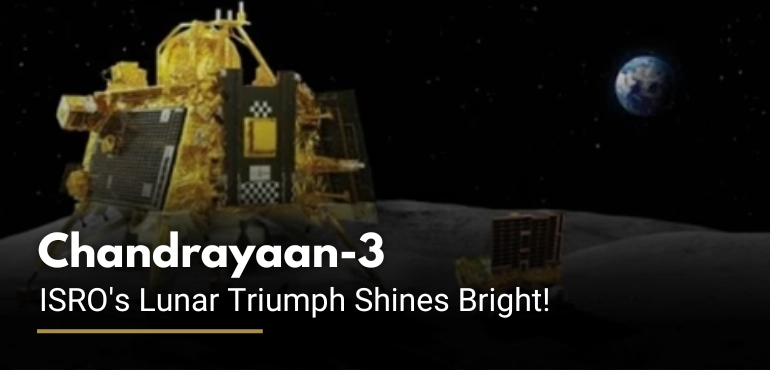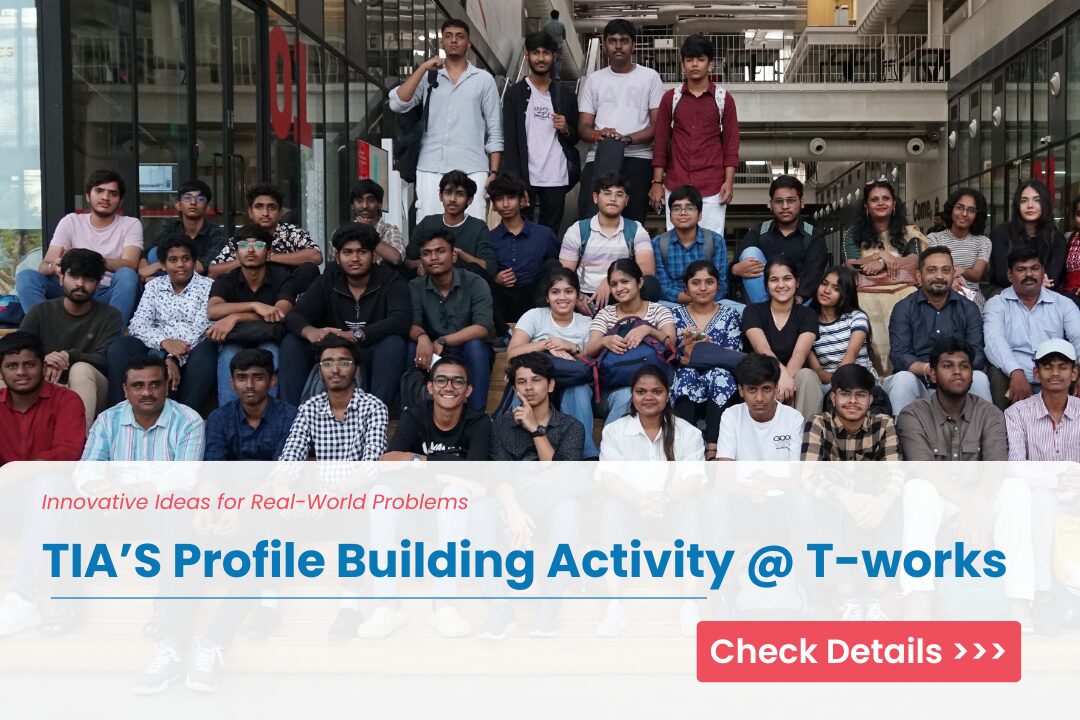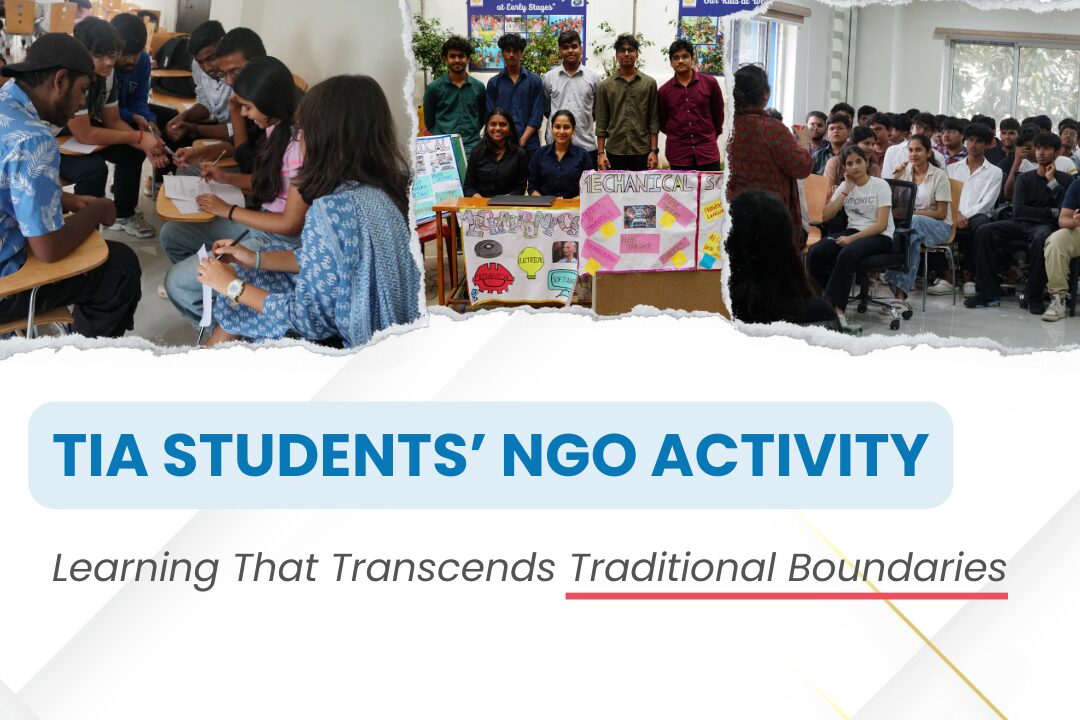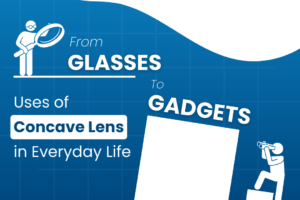
Making 1.4 billion people proud, the Indian Space Research Organisation(ISRO) is finally able to safely place a rover on the lunar south pole on 23rd August 2023. As Russia’s Luna 25, unfortunately, crash-landed on the surface of the moon on Sunday, everyone got curious about India’s lunar mission, Chandrayaan-3. But, the hard work of the Indian scientists didn’t go in vain this time. With the success of Chandrayaan-3, India became the fourth country in the world to soft-land a rover on the lunar surface and the only country to land on the south pole of the moon. With this recent success, India has gained a significant competitive edge in the space exploration realm over its contenders like the US, China, and Russia.
What is Chandrayaan-3?
Chandryaan-3 is an Indian lunar exploration mission and is a part of the Chandrayaan program prestigiously taken up by the Indian Space Research Organisation(ISRO). This consists of three components- Orbitor, Lander, and Rover. The orbiter carries both the lander and the rover toward the lunar orbit. The Lander (Vikram) is responsible for safe landing on the lunar surface. It consists of four legs and carries various scientific instruments to conduct experiments on the surface of the moon. The Pragyan Rover is a six-wheeled design and weighs 25 kilograms which is going to examine the surface of the moon and conduct various experiments.
Objectives of Chandrayaan-3:
In 2008 when Chandrayaan-1 was launched, the efforts of scientists resulted in fruitful results as that mission detected titanium and also identified the presence of Calcium. Chandryaan-3 was launched with three primary objectives as follows.
To demonstrate a soft landing on the lunar surface:
As we all know, Chandrayaan-2 was considered a partial success because it didn’t land on the lunar surface successfully. So, the primary objective of the mission Chandrayaan-3 is to demonstrate a soft landing on the lunar surface. There were only three countries namely the United States, Russia, and China to achieve this feat. With the latest success of Chandrayaan-3, India also joined the elite list of countries that achieved a safe landing on the surface of the moon.
To make a rover move on the moon:
The Pragyan Rover which consists of six wheels was designed to rove on the lunar surface with a speed of 1 cm/second and it operates using solar energy. It conducts the on-site analysis to figure out the composition of the moon and sends the data to the Vikram Lander which is connected to the Earth station. The weight of the rover is around 26 kg and is supposed to travel for a distance of around 500 meters on the surface of the moon to conduct the on-site analysis.
To conduct in-situ scientific experiments:
The rover is supposed to examine the existence of various elements like magnesium, aluminum, silicon, potassium, calcium, titanium, and iron. It’s believed that the moon has no atmosphere. But, the Pragyan rover is going to examine the possibility of the existence of an atmosphere around the moon. So, basically, the Pragyan rover aims to study the composition of the lunar surface along with the atmosphere around it.
Now, let’s look at each of the events that describe the progress of Chandrayaan-3 right from its launch.
July 14th- The Launch:
On the 14th of July 2023, Chandrayaan-3 was launched at around 2:35 PM IST from the Satish Dhawan Space Center, located in Sriharikota, Andhra Pradesh. It is one of the three satellite launching stations in India along with Vikram Sarabhai Space Centre, Thiruvananthapuram, and Dr Abdul Kalam Island located in Odisha.
August 1st: Moved from Earth’s orbit toward the moon:
On the 1st of August, 2023, the spacecraft was successfully inserted into the translunar orbit. At this point in time, the orbit achieved 288 km x 369328 km. During this phase, spacecraft velocity significantly increases as the engines on the Propulsion Module spring into action with their full potential. This is one of the most crucial stages in the success of the Chandrayaan-3 and the scientists of ISRO diligently made it work as planned.
August 5th- Entry to the lunar orbit:
At this phase, Chandrayaan-3 was successfully inserted into the lunar orbit and the orbit achieved is 164 km x 18074 km, as planned earlier. Here the aim is for orbit reduction which has to be done with utmost diligence and very precise calculations. ISRO scientists carefully curated the plan at every single step and seamlessly executed the entire process with extreme vigilance.
6th to 16th August – Orbit Reduction:
This phase was specifically about orbit reduction, and on 14th August 2023, the mission has undergone the circularisation phase. Getting orbit reduction as planned is essential for a smooth landing and the scientists have done a tremendous job in making things work in the way just they are supposed to. The orbit reduction phase continued till the 16th of August and the spacecraft was in an orbit of 153 km x 163 km as of 16th August, 2023.
August 17th- Separation of modules:
From the propulsion module, the lander module was successfully separated on the 17th of August, 2023 and the deboosting was done on the 18th and 20th of August. As of 20th August 2023, the Lander Module is in a 25 km x 134 km orbit and everything was set for a smooth landing of the Vikram lander on the surface of the moon.
August-23: India became the 4th country to achieve a safe landing on Moon:
Finally on the 23rd of August 2023, precisely at 6: 04 PM IST, Vikram Lander successfully landed on the lunar surface after a Powered descent. All the scientists from the Satish Dhawan Space Center burst into happiness and so were millions of Indians. With this success, India became the fourth country to successfully place a rover on the lunar surface along with the United States, China, and Russia.








